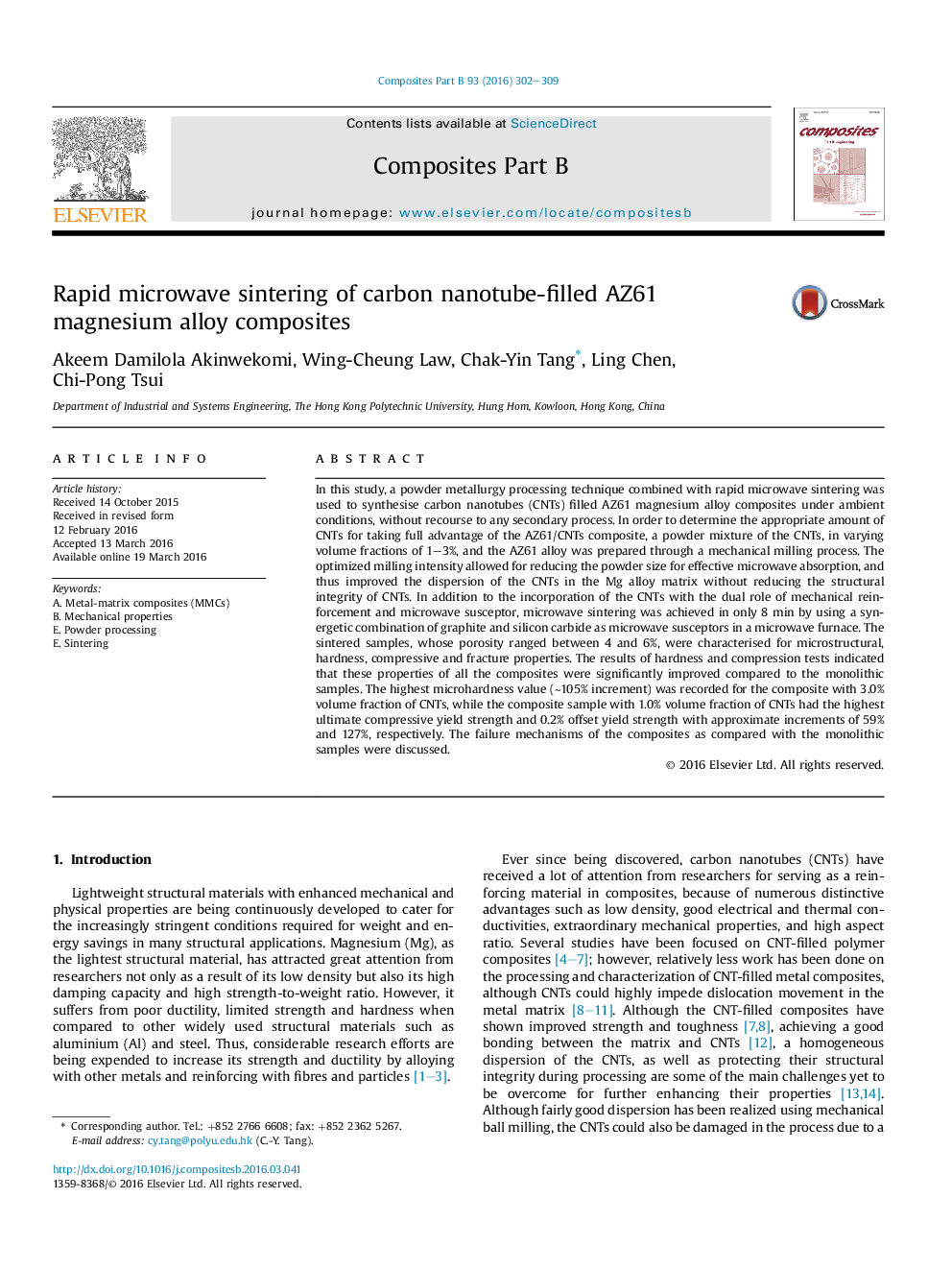| Article ID | Journal | Published Year | Pages | File Type |
|---|---|---|---|---|
| 816866 | Composites Part B: Engineering | 2016 | 8 Pages |
In this study, a powder metallurgy processing technique combined with rapid microwave sintering was used to synthesise carbon nanotubes (CNTs) filled AZ61 magnesium alloy composites under ambient conditions, without recourse to any secondary process. In order to determine the appropriate amount of CNTs for taking full advantage of the AZ61/CNTs composite, a powder mixture of the CNTs, in varying volume fractions of 1–3%, and the AZ61 alloy was prepared through a mechanical milling process. The optimized milling intensity allowed for reducing the powder size for effective microwave absorption, and thus improved the dispersion of the CNTs in the Mg alloy matrix without reducing the structural integrity of CNTs. In addition to the incorporation of the CNTs with the dual role of mechanical reinforcement and microwave susceptor, microwave sintering was achieved in only 8 min by using a synergetic combination of graphite and silicon carbide as microwave susceptors in a microwave furnace. The sintered samples, whose porosity ranged between 4 and 6%, were characterised for microstructural, hardness, compressive and fracture properties. The results of hardness and compression tests indicated that these properties of all the composites were significantly improved compared to the monolithic samples. The highest microhardness value (∼105% increment) was recorded for the composite with 3.0% volume fraction of CNTs, while the composite sample with 1.0% volume fraction of CNTs had the highest ultimate compressive yield strength and 0.2% offset yield strength with approximate increments of 59% and 127%, respectively. The failure mechanisms of the composites as compared with the monolithic samples were discussed.
